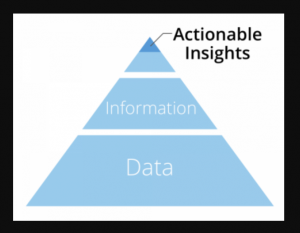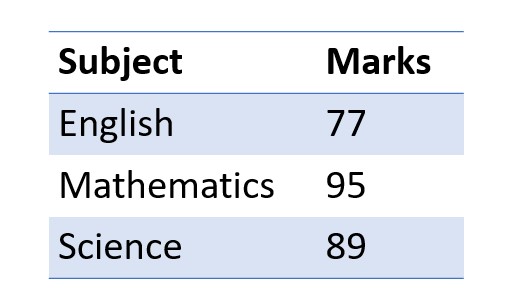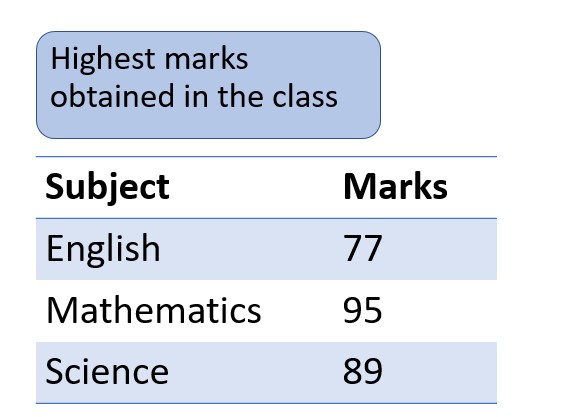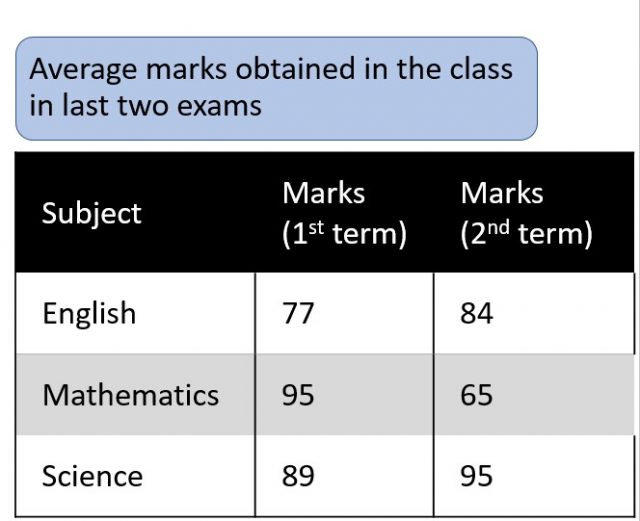
The idea of actionable insights is something that has gone mainstream across different departments in any and every business due to the onset of decision-centric analytics and digital transformation initiatives at large. Today, actionable insights are at the heart of many successful business decisions, and are used to help companies grow further than ever before. Actionable insights are key to any data analytics initiatives including decision-centric analytics which are at the heart of digital transformation. Analytics centered around actionable insights can also be termed as actionable analytics. In this blog post, we will understand the concepts of actionable insights with the help of examples along with few actionable analytics tools which are used when dealing with actionable insights.
What are Actionable Insights?
Actionable insights can be defined as insights which can help in driving decisions and taking action to achieve desirable outcomes. For example, identify or classify customers who are at the risk of defaulting on the loan. Based on the classification, banks can take appropriate decisions and act on those customers. In addition, the actionable insights can also be the KPIs which help monitor the action taken to achieve desired outcome and realign the decisions to perform different set of actions as appropriate. These insights can be used to take informed decisions and help companies grow.
Actionable insights can be derived from all form of analytics including descriptive, predictive and prescriptive analytics.
Dashboards play a key role in bringing actionable insights to the stakeholders and decision makers as they provide a consolidated view of the data and insights. The following is how a dashboard having actionable insights might look like:
- A couple of KPIs representing key outcome (lagging KPIs). A time-series based KPIs or benchmark -based KPIs could be very useful.
- A set of KPIs which are used to assess the output of activities taken towards achieving the outcomes. Note that these activities are executed as a result of decisions taken.
There are different kinds of decisions including programmed and unprogrammed decisions and actionable insights can be used to drive both kinds of decisions. You may want to check my related post – Decision science vs Data Science to understand about different types of decisions, in detail.
Lets take a look at a very short video to understand the concepts of actionable insights with the help of a very simple example.
Actionable insights can be used to take both, programmed decisions (long-term, strategic) as well as un-programmed decisions (short-term). Note that programmed decisions are primarily driven by descriptive analytics while un-programmed decisions can be mainly driven by predictive analytics.
Actionable insights often get confused with actionable analytics. While actionable insights are based on data, actionable analytics refers to the application of actionable insights by means of various software tools and techniques.
Key performance indicators (KPIs) and benchmarks play a key role in actionable insights. Simply speaking, KPIs are insights that provide the ability to track progress of your initiatives / actions / projects. In the world of product, the product success is measured using metrics / KPIs against success criteria. The KPIs drive actions appropriately to achieve the desired business goals. Often KPIs are used along with actionable analytics tools like analytics dashboards for actionable insights on various levels. Read about KPIs and the difference between leading and lagging KPIs in this blog – Leading and lagging KPIs: Concepts & Examples.
One needs to have good clarity in relation to definition of data, insights and actionable insights. The difference between data, insights and actionable insights is the following:
- Data is defined as the raw facts, observations and figures of any action. Any piece of data or information can be interpreted in multiple ways by different people on multiple occasions. This makes it hard to take action based on what you know because there would always be some chance that your interpretation was wrong which could result in making a bad decision. Here is an example of plain data representing marks in three different subject. Think if you can take any action on this data.

- Insights are defined as educated guesses from data. You can gain insights by looking at a piece of information and identifying patterns, relationships or other strong indicators within it. The table below represents highest marks obtained in a class in three different subjects. Think whether this can trigger some decisions and related actions.

- Actionable insight is defined as the action taken based on your interpretation of both business data and its analytics which have been combined with your experience and expertise. When actionable insights are combined with your expert knowledge you can take action based on all the data which is available to you so that any decision made has a higher chance of being correct. The picture below represents average marks obtained in the class in three different subjects in the two consecutive exams namely 1st term and 2nd term. Think whether this insights can trigger some discussions, decisions and related actions. Note that the marks in Mathematics has dipped considerably. Why? This can result in some sort of decisions which can result in triggering of some actions to improve marks of Mathematics in upcoming exams.

How do we convert Data into Actionable Insights?
In order to convert data into actionable insights, we need to start from the problem statement. The following are some of the steps which can result in deriving actionable insights from the data:
- Understand the problem well & define the problem statement: This may require talking to the actual end users who is facing the problem. The idea is to understand the root cause related to the problem. You can use questioning techniques such as 5-whys, the Socratic method, etc to come up with good questions which can help understand the problem in a better manner. The goal is to come up with hypothesis around why does the problem exist. This can also be termed as diagnosing the cause of the problem. The end deliverable of this step is to define the problem statement.
- Break down the problem into subproblems. Make sure to confirm with the end users whether the subproblems are the ones they come across readily. Define the subproblems appropriately. The idea is to arrive at the first principles related to the problem by understand the people, process and technology aspects of problem, as applicable. We can define hypothesis related to each of these aspects.
- Prioritize the subproblems based on value-complexity matrix.
- Come up with hypotheses that represent the possible solutions to these problems. Formulate the hypotheses in null & alternate hypotheses. Make sure that these hypotheses are actionable. These hypotheses help decide and act based on the data insights.
- Identify and gather the data set required to validate / test the hypotheses. Note that at this stage, you start gathering the data. Try to gather the data from internal and external sources to avoid data bias.
- Validate/test the hypotheses by leveraging data and hypotheses testing techniques (Statistical tests come very handy)
- If the null hypotheses get rejected, the related alternate hypotheses can be implemented as solution. As part of the solution, the actionable insights are created which helps stakeholders make decision in automated manner and take related actions appropriately.
Read my related post on how to arrive at the most appropriate data analytics use cases from business problems – Business problems to analytics use cases.
Advantages of Actionable Insights
Some of the key advantages of actionable insights are listed below.
- Allow you to make informed decisions which drive actions leading to positive business impact resulting in sustained growth over a period of time
- Allows quicker response times in today’s rapidly changing competitive world. Insights that trigger un-programmed decisions, primarily driven by predictive and prescriptive analytics can help get an edge over your competitors.
- Helps companies improve operational efficiency by identifying actionable insights within your data resulting in process improvements
- Helps to make better use of resources by identifying where you should invest and work on next to drive future growth.
What are risks associated with actionable insights?
One of the key risk associated with relying too much over actionable insights is confirmation bias. Confirmation bias is defined as a tendency to search for, interpret and favor data or information that supports your existing beliefs or ideas. Actionable insights are meant to help you make informed decisions based on data but if actionable insight reports reinforce what you already believed then the risk of making a bad decision is higher.
What are some examples of actionable insights?
The following is listed few actionable insights examples:
- Create targeted marketing campaigns which resonate better with your audience by combining actionable insights from both demographic data (age, gender etc.) and consumer behavior.
- Identify the proper items to sell in specific areas based on cross-selling data for increasing sales volume.
- By analyzing your supply chain process, you can identify where costs are being incurred. You may then adjust the cost structure via actionable insight that results from supply chain process optimization to improve margins.
- Identify loan borrowers that are likely to default on their loans by analyzing actionable insights from financial data and take appropriate action.
- Identify maverick spend based on actionable insights from supplier spend analysis and help plan in a better manner.
- Identify fraud or error patterns by analyzing insights from accounting data and take action to prevent losses.
- Identify preferred suppliers that you should engage to reduce costs and work (act) with suppliers on discounts etc. This is one of the key goals of procurement in any organization.
- Measure the engagement of employees and take action based on analytics analysis in order to improve employee productivity, attendance etc.
What are some tools that can be used?
The following are some tools which can be used to work with actionable insights:
- Enterprise Dashboards: Dashboards can be created using tools such as Qliksense, Power BI, Tableau etc. to provide actionable insights from available information.
- Web analytics dashboards: Tools such as google analytics can be used to provide actionable insights on customer behavior data based on customer browsing patterns. Other tools similar to google analytics include MixPanel, Piwik, Smartlook etc.
References
Here are a few of my related posts which you would want to check out:
- Data-driven decision-making: What, why and how
- Relationship: Analytics & data-driven decision-making
Actionable insights are action taken based on your interpretation of both business data and its analytics which have been combined with the experience and expertise. When actionable insights are combined with the expert knowledge you can take action based on all the data which is available to you so that any decision made has a higher likelihood of being correct. Some advantages of actionable insights include faster response times, better & informed decision making, using resources more efficiently by investing where needed etc. There are tools such as enterprise dashboard software or web analytics dashboards too which allow using actionable insight from information they provide in order to make decisions quicker or optimize processes accordingly. If you would like to more, please reach out to me.
- Three Approaches to Creating AI Agents: Code Examples - June 27, 2025
- What is Embodied AI? Explained with Examples - May 11, 2025
- Retrieval Augmented Generation (RAG) & LLM: Examples - February 15, 2025
Very very good read. Completely answered my question on how to recommend steps for users based on insights. (for context I’m a product designer)
Thank you Bari for your feedback.